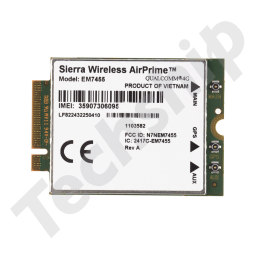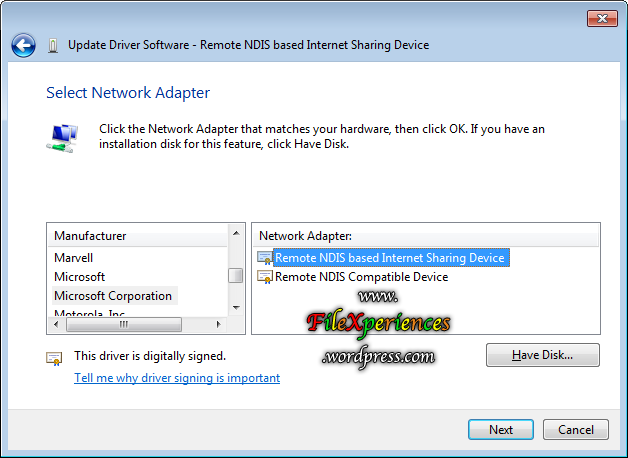AirLink USB Ethernet/RNDIS Driver Download
Download ASUS Android USB Ethernet / RNDIS Driver 1.0.0.3 (Other Drivers & Tools). This package provides the installation files for ASUS Android USB Ethernet / RNDIS Driver version 1.0.0.3. In order to manually update your driver, follow the steps below (the next steps): 1. Go to Device Manager. Linux usb ethernet/rndis gadget - there are 7 drivers found for the selected device, which you can download from our website for free. The usb-eth module in linux makes the computer running it a variation of an ethernet device that uses usb as the physical medium. Problem Description - I have a USB composite device (2 devices). One of the subdevice is USB RNDIS ethernet and the other is printer. To simplify and test the integration we are taking printer as second device. The USB configuration descriptors use IAD (Interface Association Descr. It will automatically download and install the RNDIS Ethernet drivers Some versions of windows may mis-interpret the PI as a COM port and you must manually force or install Microsoft RNDIS driver usage in Device Manager by right-clickUpdate Driver SoftwareBrowse my computerPick from a listNetwork AdaptersMicrosoftRemote NDIS compatible.
- Linux Usb Ethernet Rndis Gadget
- Usb Rndis Device Driver
- Airlink Usb Ethernet/rndis Driver Download Mac
Install RNDIS for Parrot Minidrones

If you are working on a Windows® computer, you must install Remote Network Driver Interface Specification (RNDIS) before you start working with the Simulink® Support Package for Parrot® Minidrones.
Note
When the Parrot minidrone is connected to the host computer over USB, there is a timeout period (typically, 60 seconds) after which the drone automatically disconnects from the host computer. After the disconnection, the USB drive for Parrot minidrone disappears from the Devices and drives list in the Windows PC.
Therefore, ensure that you complete the RNDIS installation procedure fast enough, before the timeout occurs.
Prerequisites
Before you begin:

Switch On the Parrot minidrone. The On/Off button is located under the minidrone, near the vertical camera. The LEDs glow or blink to indicate the On or Off status of the Parrot minidrone. The LED indications for Parrot minidrones are:
LED Indications Related to USB Connection and Timeout for Parrot Minidrones
Name of the Parrot Minidrone
LED Indications Drone is Turned ON Minidrone is Connected to PC over USB Connection Timeout Occurs Parrot Rolling Spider Both left and right LEDs – Green and stable
Left LED – Green and stable
Right LED – Red and stable
Left LED is off
Parrot Mambo Both left and right LEDs – Green and blinking
Both left and right LEDs – Green and stable
Both LEDs are off
Connect the minidrone to a USB port of your computer using a micro-USB Type-B cable, and wait for the LED indications to be stable (as described in the column - Minidrone is connected to PC over USB - in the above table).
Note
Ensure that the minidrone is recognized by your computer.
Install the RNDIS Driver
Before you begin, complete the steps mentioned in the Prerequisites section.
Note
During the entire process, ensure that:
The Parrot minidrone is switched on and the battery is charged.
The LED indications with the USB connected are the same as described in the column - Minidrone is connected to PC over USB - in Prerequisites.
If a timeout happens, the Parrot minidrone disconnects from the host computer. You have to then unplug the micro-USB cable from the minidrone, reconnect it, and repeat the entire process (as described below) again.
To install the RNDIS driver:
Open Device Manager and select Other devices. From the expanded list, right-click RNDIS and then click Update Driver Software... from the menu.
When prompted, click .
Click .
From the Common hardware types list, select Network adapters and click .
Select Microsoft in the Manufacturer list and Remote NDIS Compatible Device in the Model list. Click .
Note
If you are using Windows 7, select Microsoft Corporation instead of Microsoft.
In the Update Driver Warning dialog box, click .
The RNDIS driver is now installed and ready for use.
After a successful installation, the RNDIS device appears on the Device Manager screen under Network adapters.
Note
The RNDIS device name may be different in Windows 7 and Windows 8. For example, the device name appears as RNDIS in Windows 7.
Note
A timeout can happen during the RNDIS installation or just after the RNDIS installation is completed. If the timeout happens, the RNDIS device does not appear under Network adapters. In this case:
Disconnect the micro-USB cable and reconnect it again.
If reconnecting the USB cable also does not list the RNDIS device, repeat the entire RNDIS installation process again, before the timeout happens.
Remote NDIS (RNDIS) eliminates the need for hardware vendors to write an NDIS miniport device driver for a network device attached to the USB bus. Remote NDIS accomplishes this by defining a bus-independent message set and a description of how this message set operates over the USB bus. Because this Remote NDIS interface is standardized, one set of host drivers can support any number of networking devices attached to the USB bus. This significantly reduces the development burden on device manufacturers, improves the overall stability of the system because no new drivers are required, and improves the end-user experience because there are no drivers to install to support a new USB bus-connected network device. Currently Microsoft Windows provides support for Remote NDIS over USB.
The following figure shows the replacement of the device manufacturer's NDIS miniport with the combination of a Remote NDIS miniport driver and a USB transport driver. The device manufacturer can therefore concentrate on device implementation and not have to develop a Windows NDIS device driver.
Microsoft provides an NDIS miniport driver, Rndismp.sys, which implements the Remote NDIS message set and communicates with generic bus transport drivers, which in turn communicate with the appropriate bus driver. This NDIS miniport driver is implemented and maintained by Microsoft and is distributed as part of Windows.
The following Remote NDIS message set mirrors the semantics of the NDIS miniport driver interface:
Initializing, resetting, and halting device operation
Transmitting and receiving networking data packets
Setting and querying device operational parameters
Indicating media link status and monitoring device status
Microsoft also provides a USB bus transport driver that implements a mechanism for carrying the Remote NDIS messages across the USB bus. This driver transports standardized Remote NDIS messages between the Remote NDIS miniport driver and the bus-specific driver, such as USB. The bus-specific drivers are also required to map any bus-specific requirements, such as power management, into standardized Remote NDIS messages. The transport driver for USB 1.1 and 2.0 is implemented and maintained by Microsoft and distributed as part of Windows.
Linux Usb Ethernet Rndis Gadget
Usb Rndis Device Driver
This structure allows a single device driver to be used for any Remote NDIS device for which there is a bus-specific transport layer. In addition, only one bus transport layer is required for all network devices on a specific bus.
This section includes the following additional topics:
Airlink Usb Ethernet/rndis Driver Download Mac
Related topics
